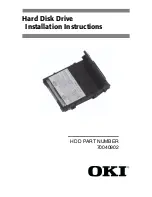
Scalar 218
Theory of Operation
adic
Service Procedure
63-1181-01 Rev A
2
Functional Sections
Controller
The Controller can be logically divided into the
SCSI-2 Interface
and the
Robotics Controller
.
SCSI-2 Interface
The 218 connects to the host computer's SCSI channel through this interface. The SCSI channel is the
control, communications, and data bus through which commands, messages, and data are passed between
the Scalar, the drives, and the host computer. The
SCSI-2 Interface
passes commands to the
Robotics
Controller
from the applications software.
Robotics Controller
The multi-microprocessor-based
Robotics Controller
receives SCSI commands from the host computer
via the
SCSI-2 Interface
.
The operational firmware for the Master (Main) Processor and Slave (Motion)
Processor are stored in Flash EEPROM (firmware) mounted on the main controller board. Non-volatile
RAM (NVRAM) is used to store 218 configuration information and operational logs. The
Robotics
Controller
controls the
Media Handling
Mechanism
, monitors and controls the drives, and the
Operator Panel
.
Embedded Control Firmware
The embedded control firmware for the 218 is divided among four processors, the Main Processor, Motion
Processor, Picker Processor, and the Micro-Stepping Motor Control (Micro-Stepper) Processor.
Main Processor
The
Main
Processor
’s internal EPROM (Boot ROM) code provides elemental SCSI interface
intelligence, serial port control, and inter-processor communication. While executing the Boot Code, the
Main Processor
checks to see if the Flash Memory contains valid operating code (operational firmware).
If the operational firmware is valid, the
Main Processor
signals to the
Motion Processor
to notify the
keyboard and then proceeds to download code from the Flash Memory to the
Motion
Processor
’s
RAM. When completed, the
Main Processor
signals the
Motion Processor
to switch to RAM-based
code and then switches its addressing so that it begins operating out of the Flash Memory instead of it’s
internal Boot ROM.
If valid operational firmware is not found in the Flash Memory, the
Main Processor
continues to execute
the Boot Code, monitoring the SCSI chip for a valid request to download code to the Flash Memory.
Once executing the operational firmware in Flash Memory, the
Main Processor
performs the following
functions:
l
Provides complete SCSI interface protocol.
























